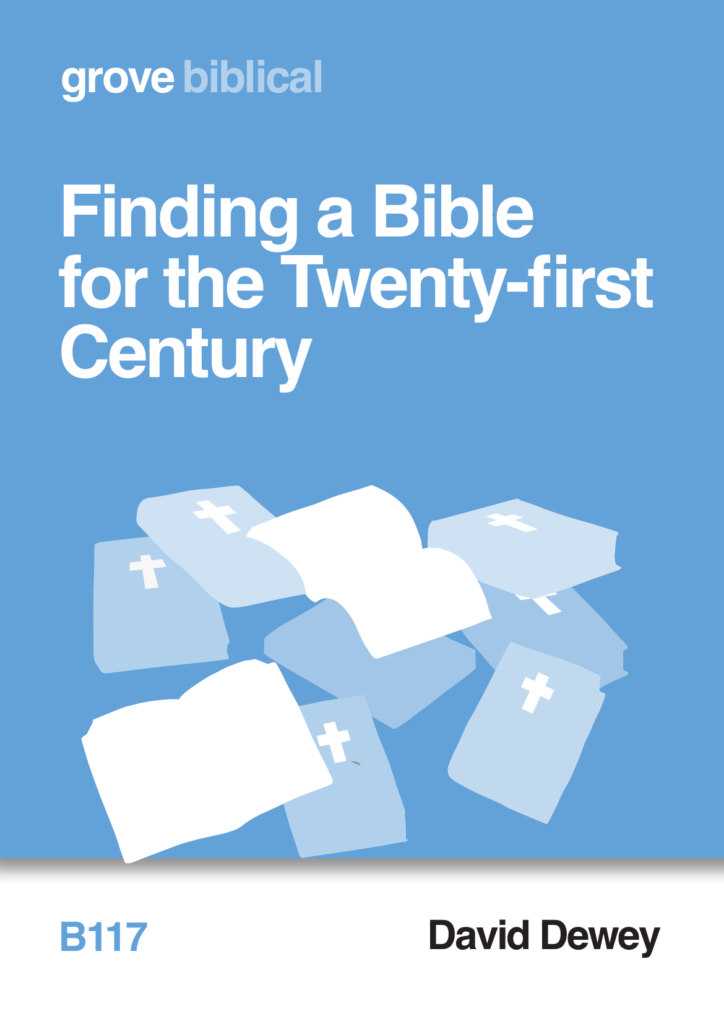I was initially planning to call this post ‘Why is Revelation so difficult to interpret?’ There are lots of reasons for that. The first is that it is intricately connected with its historical context in ways which fundamentally affect the way we interpret it.
 Perhaps the best-known example of this is the question of what it means to be ‘lukewarm’ in the message to the ekklesia in Laodicea in Rev 3.15–16. It is usually assumed that to be ‘hot’ is to be fervent (a good thing) and to be ‘cold’ is to be indifferent to faith (a bad thing). So how could the risen Christ prefer us to be cold than to be ‘lukewarm’ (usually assumed to mean being neither one nor the other—Anglican in fact!). But in its historical context, hot and cold are both good things to be. Across the valley in Hierapolis (modern day Pammukale), the hot springs bring healing. Further up the valley in Colossae the cold springs bring refreshment. But in Laodicea, the hot water has to travel some distance, so by the time it reaches the city it is lukewarm, and with its dissolved calcium carbonate, if you drink it, it makes you want to—spit it out! Hot and cold are both good for something, but lukewarm water is good for—nothing. It is then that we notice what the verse actually says: not, ‘I know your faith‘ but ‘I know your works—and you are being ineffective’ (Rev 3.15).
Perhaps the best-known example of this is the question of what it means to be ‘lukewarm’ in the message to the ekklesia in Laodicea in Rev 3.15–16. It is usually assumed that to be ‘hot’ is to be fervent (a good thing) and to be ‘cold’ is to be indifferent to faith (a bad thing). So how could the risen Christ prefer us to be cold than to be ‘lukewarm’ (usually assumed to mean being neither one nor the other—Anglican in fact!). But in its historical context, hot and cold are both good things to be. Across the valley in Hierapolis (modern day Pammukale), the hot springs bring healing. Further up the valley in Colossae the cold springs bring refreshment. But in Laodicea, the hot water has to travel some distance, so by the time it reaches the city it is lukewarm, and with its dissolved calcium carbonate, if you drink it, it makes you want to—spit it out! Hot and cold are both good for something, but lukewarm water is good for—nothing. It is then that we notice what the verse actually says: not, ‘I know your faith‘ but ‘I know your works—and you are being ineffective’ (Rev 3.15).
A less obvious example is the depiction of worship in chapters 4 and 5. There are elements here we might recognise from the Old Testament—the rainbow from Genesis 9, thunder and lightning from Moses’ encounter with God on Sinai, living creatures from Ezekiel 1, and so on. But there are plenty of other elements (such as the elders in white casting down their crowns) which we don’t recognise. Ironically, popular commentary often treats these elements as a quasi-literal depiction of what is happening ‘in heaven’, but in fact these other elements correspond with what we know from the ‘worship’ of the Roman emperor. The central passage in the book, chapter 12, also offers similar challenges. We recognise the characters from the story (more or less), but the plot baffles us, unless we are familiar with the myth of Leto, who gave birth to Artemis and Apollo. The great temple of Artemis was located in Ephesus, and the emperor was often depicted as a kind of Apollo figure. (For a fuller exploration, see the post ‘Is our God greater?’)
The second reason why we find Revelation difficult is its constant allusion to the Old Testament. In its 405 verses there are something like 676 allusions (I know; I counted them!) so if we do not know our OT very well, we will be baffled by just about every verse in Revelation. The surprising thing here is that the books most alluded to are Isaiah and Psalms, which is probably not what we expected.
But there is something even more fundamental about the way Revelation uses language that not only makes it difficult to read—it also explains why there are so many different, apparently conflicting ways that it has been interpreted. Revelation’s language is thoroughly metaphorical, and that in itself gives us enough problems. But like many other ‘apocalyptic’ texts, it deploys metaphor in a particularly challenging way.
According to Paul Ricoeur, metaphor has three elements to it: the subject (what the metaphor is referring to); the vehicle (the term which is used metaphorically); and the tenor (the sense the metaphor is communicating). So if I say ‘My friend is a pig’, then the subject is my (former) friend, the vehicle is ‘pig’ and the tenor is whatever ‘pig-likeness’ communicates, either greed or unkindness (though in fact pigs are neither greedy nor unkind…but that is another story). Metaphors are easiest to make sense of when we know all three. So when the assembly at Ephesus is told that it is [like] a lover who has grown jaded, or those in Sardis that they are [like] guards who have fallen asleep, then we don’t have too much trouble making sense of this—which is why these chapters are the only ones ever preached on!
But what happens when the subject disappears from view? These seven oracles are to be spoken to the ‘angel’ of each assembly. Is that a person, perhaps the leader? Or is there really an angel attached to each place—either as the ‘spirit’ of the assembly or as some sort of guardian angel?
 This kind of metaphor is surprisingly common in everyday speech; you can hear it on football terraces, or in any context where the subject of the metaphor is understood without the need to specify it. Its technical name is ‘hypocatastasis’, from the Greek for ‘arranging’ and ‘under’. The only modern commentary on Revelation I have found it in in Greg Beale’s in the NIGTC, but the term was first popularised by a Victorian clergyman called E W Bullinger. Bullinger was an advocate of hyper-dispensationalism who believed that the ‘church era’ only began at the end of Acts 28, so we should not take any of the teaching of Acts, or the gospels for that matter, as now applying to us. (So Bullinger believed that reciting the Lord’s Prayer as Jesus taught it belonged to a previous dispensation, and was not relevant for Christians…!) For his troubles, he was denounced by regular dispensationalists as purveying an “absolutely Satanic perversion of the truth”! But along the way, in 1898 he wrote Figures of Speech as Used in the Bible, which you can still buy online and which continues to be influential (along with his other teaching) amongst certain groups on the Continent. Here is what Bullinger says:
This kind of metaphor is surprisingly common in everyday speech; you can hear it on football terraces, or in any context where the subject of the metaphor is understood without the need to specify it. Its technical name is ‘hypocatastasis’, from the Greek for ‘arranging’ and ‘under’. The only modern commentary on Revelation I have found it in in Greg Beale’s in the NIGTC, but the term was first popularised by a Victorian clergyman called E W Bullinger. Bullinger was an advocate of hyper-dispensationalism who believed that the ‘church era’ only began at the end of Acts 28, so we should not take any of the teaching of Acts, or the gospels for that matter, as now applying to us. (So Bullinger believed that reciting the Lord’s Prayer as Jesus taught it belonged to a previous dispensation, and was not relevant for Christians…!) For his troubles, he was denounced by regular dispensationalists as purveying an “absolutely Satanic perversion of the truth”! But along the way, in 1898 he wrote Figures of Speech as Used in the Bible, which you can still buy online and which continues to be influential (along with his other teaching) amongst certain groups on the Continent. Here is what Bullinger says:
As a figure, it differs from Metaphor, because in a metaphor the two nouns are both named and given; while, in Hypocatastasis, only one is named and the other is implied, or as it were, is put down underneath out of sight. Hence Hypocatastasis is implied resemblance or representation: i.e., an implied Simile or Metaphor. If Metaphor is more forcible than Simile, then Hypocatastasis is more forcible than Metaphor, and expresses as it were the superlative degree of resemblance.
For example, one may say to another, “You are like a beast.” This would be Simile, tamely stating a fact. If, however, he said, “You are a beast” that would be Metaphor. But, if he said simply, “Beast!” that would be Hypocatastasis, for the other part of the Simile or Metaphor (“you”), would be implied and not stated.
This figure, therefore, is calculated to arouse the mind and attract and excite the attention to the greatest extent.
My favourite example of hypocatastasis comes from the penultimate scene in the film Pretty Woman. Richard Gere is returning a $250,000 necklace to the hotel manager, Mr Thompson, after his relationship with Julia Roberts has apparently come to an end. Thompson asks permission to open the box, and after looking at the necklace, says to Gere:
It must be very difficult to let go of something so beautiful.
This illustrates the power and problem of hypocatastasis perfectly. The subject here is not specified—so we could simply take it as a literal, non-metaphorical reference to the necklace. But precisely because the subject is not specified, it is very easy for the reference to change. Thompson goes on:
Darren [the chauffeur] took Miss Vivian back to her apartment last night.
Now the statement transfers to another subject and becomes metaphorical; it is Vivian who is the beautiful thing that is hard to let go of. And Bullinger is quite right about the power of hypocatastasis; this is the most powerful single moment in the film.
 These three features—of possible literalism, of transferability, and of power—are writ large on the history of the interpretation of Revelation. Some have read it thinking there really will be beasts emerging from the sea, that there are living creatures and rainbows in heaven, that our destiny is to sit on clouds playing harps (chapter 14), and that we will pass through pearly gates. Others have been able to identify people and institutions in their own world quite happily with the beasts and dragons, the woman clothed with the sun and the harlot riding the beast. And every generation has found this to be a text of extraordinary power—for good or otherwise. And it all comes down to hypocatastasis.
These three features—of possible literalism, of transferability, and of power—are writ large on the history of the interpretation of Revelation. Some have read it thinking there really will be beasts emerging from the sea, that there are living creatures and rainbows in heaven, that our destiny is to sit on clouds playing harps (chapter 14), and that we will pass through pearly gates. Others have been able to identify people and institutions in their own world quite happily with the beasts and dragons, the woman clothed with the sun and the harlot riding the beast. And every generation has found this to be a text of extraordinary power—for good or otherwise. And it all comes down to hypocatastasis.
You might by now be thinking ‘I wish John had made himself a little clearer, and used less powerful but less ambiguous language.’ Perhaps so, but it is also worth pondering: if you knew that the church was about to enter 200 years of intense persecution, what would you write?
With power comes responsibility. The great power of Revelation, and its hypocatastatic metaphors, comes the need for great responsibility in its interpretation. Like a powerful chemical, which could do great things but also cause great damage, we need to handle with care.
(And just for fun, here is the first scene when the necklace makes an appearance. Gere’s sitting of the box on Roberts’ fingers was improvised, and you can see Roberts look around at the camera crew before regaining her composure.)
Much of my work is done on a freelance basis. If you have valued this post, would you consider donating £1.20 a month to support the production of this blog?
 Buy me a Coffee
Buy me a Coffee




























Hi Ian. Thanks so much for this – I always enjoy reading revelation and preaching from it! On a lighter note and one, I hope that won’t lower the tone of your blog I am fascinated at the illustration of the beasts from the sea. Before I retired from the Med school at Birmingham I cloned a gene called Dkk1, important in control of cell division. It was ages before I realised it was named by a German and stood for ‘Dickkopf’ (need I translate?). That is why a detail in your illustration made me laugh!! Shalom.
Thanks! You must be unusual in enjoying preaching from Revelation. Most dread it!
I really enjoyed this post. Part of the challenge as you have noted relates to metaphorical language. Your example of “pig” is a case in point. You suggest that this metaphor communicates either “greed or unkindness.” But when I think of the metaphorical use of “pig” I think of one who is either uncouth, overweight, or messy. Context in narrowing the intended meaning is of course key. For example, if a man makes a rude remark to a woman and as a result she calls him a pig, then the uncouth sense seems more likely (or unkindness using your options).
Yes. The interesting thing in determining the tenor of the metaphor is that it depends on the meanings and contexts of both subject and vehicle—but also the literary and cultural world of the term as used metaphorically. ‘Sleeping like a baby’ is another example of this.
Fascinating breakdown, Ian, much appreciated, especially Ricoeur’s elements of metaphor.
From a liberal POV, I would say that this ambiguity of meaning is a pragmatic reason for being (at least) cautious about biblical authority. If the meaning’s unclear, a preacher can say pretty much whatever they like, and appoint themselves God’s mouthpiece. The thing empowered isn’t the Bible, but the man.
James,
Ian has ably explained the challenges of metaphorical language, but metaphor does not encompass the entirety of scripture. Metaphor intersperses and underscores the very explicit moral affirmations and denunciations in both the OT and NT.
And it’s no better for some self-appointed liberal mouthpieces to play fast and loose with what the prophets and apostles have explicitly affirmed and denounced than it is for conservative ones that you mention to be doctrinaire in their interpretation of metaphorical language.
At the level of language, though, there is a big difference between something being unclear (i.e. we don’t know what it meant) and something being ambiguous or multifocal (i.e. it could mean any number of things).
I think I would agree with you that some evangelicals like to consider things are clear when they are not. But I also think that a good many liberals claim things are ambiguous when in fact they are either unclear…or they are as clear as day!